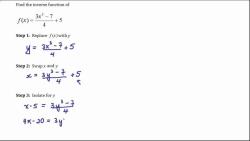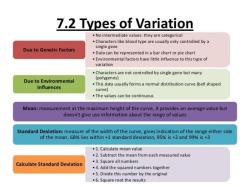What is total possible outcome?
The term "total possible outcomes" refers to the complete set of all potential results or occurrences in a given situation or event. In probability theory, understanding the total possible outcomes is crucial for calculating probabilities.
To find the total possible outcomes, you need to consider all the different ways that an event or scenario can unfold, regardless of whether those outcomes are favorable or not. The total possible outcomes represent the universe of possibilities.
Here are a few examples to illustrate the concept:
Coin Toss:
- When you toss a fair coin, the total possible outcomes are two: it can land as either "heads" or "tails."
Rolling a Six-Sided Die:
- When you roll a standard six-sided die, the total possible outcomes are six: it can land on any one of the six numbers (1 through 6).
Deck of Playing Cards:
- In a standard deck of 52 playing cards, the total possible outcomes represent all the different card combinations and sequences that can occur when drawing a single card. There are 52 possible outcomes, one for each card in the deck.
Lottery Numbers:
- In a typical lottery, the total possible outcomes are determined by the number of possible combinations of numbers. For example, in a 6/49 lottery (where you choose 6 numbers out of 49), there are 13,983,816 possible outcomes, representing all the different combinations of 6 numbers out of 49.
The concept of total possible outcomes is fundamental in probability calculations because it serves as the denominator when calculating probabilities using the formula:
Probability = (Number of Favorable Outcomes) / (Total Possible Outcomes)
In this formula, "Total Possible Outcomes" represents the entire set of potential results against which you are calculating the probability of a specific event occurring.
Total Possible Outcomes: Understanding the Concept in Probability
The total possible outcomes of an event are all of the possible results that can occur. The number of total possible outcomes is also known as the sample space.
For example, if you flip a coin, the sample space is {heads, tails}. There are two total possible outcomes: heads or tails.
If you roll a die, the sample space is {1, 2, 3, 4, 5, 6}. There are six total possible outcomes: 1, 2, 3, 4, 5, or 6.
How to Calculate the Total Possible Outcomes in a Scenario
To calculate the total possible outcomes in a scenario, you need to identify all of the possible outcomes of each event in the scenario and then multiply the number of possible outcomes for each event together.
For example, suppose you flip a coin and then roll a die. The total number of possible outcomes is 2 * 6 = 12. This is because there are two possible outcomes for the coin flip (heads or tails) and six possible outcomes for the die roll (1, 2, 3, 4, 5, or 6).
Another way to calculate the total possible outcomes in a scenario is to use the following formula:
n(S) = n1 * n2 * ... * nk
where:
- n(S) is the number of total possible outcomes.
- n1 is the number of possible outcomes for event 1.
- n2 is the number of possible outcomes for event 2.
- ...
- nk is the number of possible outcomes for event k.
Using Probability Theory to Determine Total Possible Outcomes
Probability theory can be used to determine the total possible outcomes of an event. For example, if you flip a coin, the probability of getting heads is 1/2. This means that there are two total possible outcomes: heads or tails.
If you roll a die, the probability of getting a 6 is 1/6. This means that there are six total possible outcomes: 1, 2, 3, 4, 5, or 6.
Probability theory can also be used to determine the total possible outcomes of more complex events. For example, suppose you flip a coin and then roll a die. The probability of getting heads on the coin flip and then rolling a 6 on the die is 1/2 * 1/6 = 1/12. This means that there are 12 total possible outcomes: heads and 1, heads and 2, ..., tails and 6.
Conclusion
The total possible outcomes of an event are all of the possible results that can occur. The number of total possible outcomes is also known as the sample space. Probability theory can be used to determine the total possible outcomes of an event.
By understanding the concept of total possible outcomes, you can better understand probability theory and make better decisions in uncertain situations.











